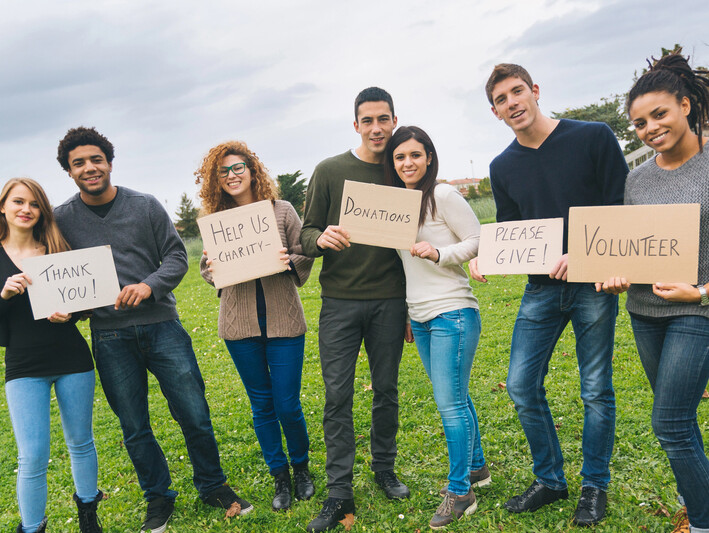Organizing Impactful Fundraising Events on a Shoestring Budget
Hosting a successful fundraising event doesn't require a lavish budget. Small nonprofits can orchestrate impactful events that resonate with donors and stakeholders by utilizing cost-effective strategies and resourceful planning. This blog post explores practical methods to minimize expenses while maximizing engagement and returns. From selecting the right venue to leveraging digital tools and community support, we provide actionable advice to help small nonprofits achieve big results with limited resources.

Venue Selection
Tips for Finding Affordable Venues for Your Nonprofit Event
Hosting a successful fundraising event doesn't have to break the bank. With a bit of creativity and resourcefulness, you can secure affordable venues that meet your needs. Here are three strategies to consider:
Exploring Free or Low-Cost Venues
Start by investigating community-oriented options such as community centers, local parks, or schools. These venues often offer lower rental rates or even free space to nonprofits. Engage with your board members and stakeholders who might have connections within the community. They may serve on other boards or have relationships with people who can assist in securing a venue at little to no cost.
Negotiating In-Kind Sponsorships
Another effective approach is to reach out to businesses and large institutions for in-kind sponsorships. These organizations might provide a venue as part of their community support or corporate social responsibility initiatives. Many businesses have large conference spaces or meeting rooms that could be ideal for your event. Approach them with a proposal highlighting the mutual benefits of supporting your cause.
Utilizing Multi-Purpose Venues
Select venues that require minimal setup and decoration, which can save both time and money. Locations with built-in seating or naturally attractive landscapes can serve both functional and aesthetic purposes. For example, consider using a nursery for an evening event or an orchard for a gathering related to land conservation. These types of venues can provide a unique and memorable setting while reducing your overall costs.
By exploring these options, you can find the perfect venue for your nonprofit event without stretching your budget.

DIY Decorations and Themes
Creative and Cost-Effective Decoration Ideas for Your Nonprofit Event
Decorations play a crucial role in setting the tone and atmosphere of your event. However, creating a visually appealing environment doesn't have to be expensive. Here are some strategies to make your event stand out while keeping costs low:
Leverage Volunteer Creativity
Tap into your volunteers' creative talents to design and produce event decorations that reflect your nonprofit's theme and mission. By involving volunteers, you save on costs and foster a sense of community and ownership among your supporters. Additionally, consider selling the decorations after the event to recoup expenses or generate additional revenue.
Utilize Recycled Materials
Promote sustainability by using recycled or donated materials for your event decor. This not only reduces costs but also supports environmentally friendly practices. Collaborate with local florists, art groups, or businesses to source materials that can be transformed into unique decorations. For example, repurposed glass jars can become elegant vases and old fabric can be turned into beautiful table runners.
Align Your Theme with Available Resources
Choose a theme that aligns with your organization's resources and mission. This makes it easier to source relevant materials and ideas. For instance, a school raising funds for a playground could use zen garden centerpieces featuring miniature swingsets crafted by committee members. A Kentucky Derby-themed event could be elegantly decorated with a single rose on each table, symbolizing the iconic "Run for the Roses."
You can create an impactful and memorable event without overspending by leveraging volunteer creativity, utilizing recycled materials, and aligning your theme with available resources. These strategies enhance the visual appeal of your event and underscore your nonprofit's commitment to sustainability and community involvement.
Digital Over Physical
Streamlining Event Planning with Digital Solutions for Your Nonprofit
Organizing an event can be a complex and costly endeavor, but digital tools and strategies can help streamline the process and reduce expenses. Here are some effective approaches to consider:
Digital Invitations and Promotions
Use digital invitations and promotional materials to save on printing costs and reduce preparation time. Send invitations and provide updates using email, social media, and your nonprofit’s website. This method saves money and allows quicker dissemination of information, ensuring that your guests receive timely updates.
Event Management Software
Use free or low-cost event management software to handle registration, ticket sales, and participant tracking. These tools can significantly reduce manual work and streamline administrative tasks. Many options are available to suit your organization's or event's size and needs. Additionally, some vendors allow you to pass on credit card processing fees to attendees, and about 80% of participants are typically willing to cover these costs.
Virtual Engagement Opportunities
Consider incorporating virtual elements into your event, allowing for hybrid models where physical attendance is optional. This approach can broaden participation through live streaming or digital interactions. While this can increase the complexity of event management, it also offers greater accessibility. It's advisable to consult with other organizations that have successfully implemented hybrid events to understand the potential challenges and best practices.
By embracing digital invitations, utilizing event management software, and exploring virtual engagement opportunities, you can make your nonprofit's event planning more efficient and cost-effective. These strategies not only help in reducing expenses but also enhance the overall experience for your participants.
Local Businesses and In-Kind Sponsorships
Effective Strategies for Building Local Partnerships for Your Nonprofit Event
Securing local partnerships can significantly enhance the success of your nonprofit event. Here are some key strategies to build and maintain these valuable relationships:
Building Local Partnerships
Reach out to local businesses for event sponsorship through financial contributions or donating goods and services such as catering, entertainment, or auction items. While it's common to approach law firms, real estate firms, and restaurants, consider contacting less frequently asked businesses, such as local title companies or window and tile shops. These businesses might welcome the opportunity to support community events and gain visibility.
Highlight Mutual Benefits
In exchange for their support, offer promotional opportunities that highlight the businesses' community involvement. This could include featuring their logo on event materials, giving them shout-outs during the event, or providing space for them to display promotional materials. Emphasize how their participation can help them reach new audiences, demonstrate their community engagement, and potentially attract new clients.
Documentation and Agreements
Ensure that all sponsorship arrangements are clearly documented to avoid misunderstandings and maintain positive relationships. Use professional records and agreements that outline the terms of the sponsorship. Having a basic template ready is essential. If you need help creating one, we can provide boilerplate templates to get you started. Always get agreements in writing to protect all parties involved and ensure clarity.
Building local partnerships, highlighting mutual benefits, and keeping clear documentation can create strong, supportive relationships with local businesses that enhance your nonprofit event's success. These strategies secure necessary resources and foster a sense of community and shared purpose.

Volunteer Staffing
Maximizing Volunteer Engagement for Successful Nonprofit Events
Volunteers are the backbone of many successful nonprofit events. To ensure everything runs smoothly, managing and appreciating your volunteer team effectively is crucial. Here are some strategies to help:
Roles and Responsibilities
Clearly define roles and responsibilities for each volunteer to ensure efficient operations from the planning stages through to event execution. Assign backups for each role and have contingency plans for staffing and technology. Providing written duties and cheat sheets for each “station” can help volunteers understand their tasks and handle any issues that arise.
Training Sessions
Conduct thorough training sessions to prepare volunteers for their roles. Training more people than necessary for each position ensures adequate coverage, regardless of any last-minute changes. Well-prepared volunteers are more effective and contribute to a smoother event experience for everyone involved.
Recognition and Appreciation
Create a plan to recognize and appreciate your volunteers' contributions, which helps foster long-term engagement and support. Consider giving volunteers special name tags or small gift bags as tokens of appreciation. Ensure these tokens are not something the volunteers made themselves. Long-term volunteers are invaluable due to their extensive institutional knowledge and experience.
By clearly defining roles, providing comprehensive training, and showing appreciation, you can enhance volunteer engagement and ensure the success of your nonprofit event. These practices help build a reliable volunteer base that supports your organization for the long term.
By adopting these strategies, small nonprofits can significantly reduce the cost of hosting events while still creating meaningful and engaging experiences for participants. This approach ensures financial sustainability and strengthens the community's involvement and support for the nonprofit's mission.